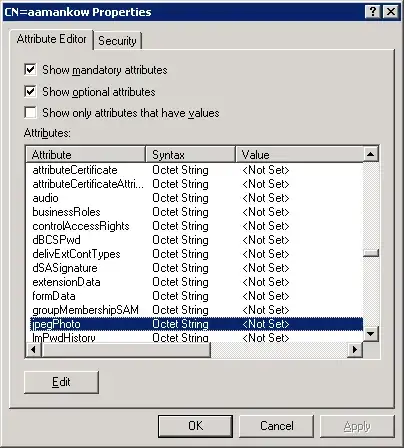The problem most people face when storing data in AD is
Extending the Schema (which often has company-political implications)
Using an existing attribute and editing the permissions (which results in AD/ACL bloat that increases your DIT and subsequent replication size)
There is an alternative... the best choice in my mind is to use this lesser known feature of AD to take an existing attribute and flag it as Confidential.
Here are details on the process
The default permissions in Active Directory are such that Authenticated Users have blanket read access to all attributes. This makes it difficult to introduce a new attribute that should be protected from being read by everyone.
To mitigate this, Windows 2003 SP1 introduces a way to mark an attribute as CONFIDENTIAL. This feature achieved by modifying the searchFlags value on the attribute in the schema. SearchFlags contains multiple bits representing various properties of an attribute. E.g. bit 1 means that the attribute is indexed. The new bit 128 (7th bit) designates the attribute as confidential.
Note: you cannot set this flag on base-schema attributes (those derived from "top" such as common-name). You can determine if an object is a base schema object by using LDP to view the object and checking the systemFlags attribute of the object. If is the 10th bit is set it is a base schema object.
When the Directory Service performs a read access check, it checks for confidential attributes. If there are, then in addition to READ_PROPERTY access, the Directory Service will also require CONTROL_ACCESS access on the attribute or its property set.
By default, only Administrators have CONTROL_ACCESS access to all objects. Thus, only Administrators will be able to read confidential attributes. Users are free to delegate this right to any specific group they want. This can be done with DSACLs tool, scripting, or the R2 ADAM version of LDP. As of this writing is not possible to use ACL UI Editor to assign these permissions.
The process of marking an attribute Confidential and adding the users that need to view the attribute has 3 Steps
Determining what attribute to mark Confidential, or adding an attribute to mark Confidential.
Marking it confidential
Granting the correct users the Control_Access right so they can view the attribute.
For more details and step-by-step instructions, please refer to the following article:
922836 How to mark an attribute as confidential in Windows Server 2003 Service Pack 1
http://support.microsoft.com/default.aspx?scid=kb;EN-US;922836
